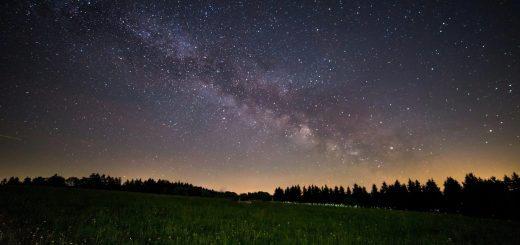The Forgotten Origins of Famous Tourist Hotspots

Before diving in, please note: This post is for informational purposes only. If you’d like to know more about how we approach topics, feel free to check out our friendly Disclaimer Page.
Hey there, amazing readers! 🖐️ Just a quick note: yes, we know there are a lot of ads here. Trust us, we get it—it’s not the prettiest look, but they help us keep this blog alive and kicking. Those pesky little ads cover the costs of all the behind-the-scenes magic, from hosting and tech stuff to creating content we hope you’ll love.
We’re committed to delivering quality posts, and your support (even just sticking around despite the ads) means everything to us. So, bear with us, and thanks for helping us keep the good vibes rolling. Now, on to the fun stuff! 😉
TRANSLATE BUTTON AT THE END OF THE ARTICLE
A Quick Overview
When we think about famous tourist hotspots, we often envision breathtaking views, bustling crowds, and iconic structures.
However, the stories behind these places often remain largely untold.
In this article, we will dive into the captivating origins of some of the world’s most beloved travel destinations.
From ancient ruins to modern architectural marvels, these histories are rich with intrigue, culture, and sometimes, even a dash of scandal!
So grab a cup of coffee, and let’s set off on this exciting journey together.
Unearthing the Hidden Histories of Travel Destinations
Every tourist hotspot has a story waiting to be uncovered.
Take the Eiffel Tower, for instance.
When I first visited Paris, I marveled at its graceful structure, unaware of the controversy surrounding its initial reception.
Originally intended as a temporary installation for the 1889 Exposition Universelle, many Parisians found it hideous.
Today, it’s a beloved symbol of romance and art, but its past reveals a tale of resistance and transformation.
Similarly, the Colosseum in Rome holds secrets beyond its stunning architecture.
This grand arena was once the site of brutal gladiatorial contests and public spectacles.
The Romans built it to showcase their engineering prowess and entertain the masses.
Yet, as I walked through its ancient corridors, I felt echoes of the lives lost and stories told.
It’s essential to recognize these layered histories, as they add depth to our appreciation of these wonders.
So why do we often overlook these backstories?
Perhaps it’s the allure of the present that draws our attention away.
Yet, by exploring the origins of these landmarks, we gain a deeper understanding of their significance.
Each brick, stone, and beam holds a tale worth telling, enriching our travel experiences in ways we never imagined.
The Enigmatic Beginnings of the Eiffel Tower
Let’s start with the Eiffel Tower.
Gustave Eiffel’s iconic structure was originally met with skepticism.
Many artists and intellectuals vehemently opposed its construction, calling it an eyesore.
They even penned an open letter in 1887, expressing their disdain.
Yet, Eiffel persevered, believing in his vision.
After completing the tower, it became a testament to modern engineering.
It stood tall at 300 meters and was the tallest man-made structure in the world for over 40 years.
Today, it attracts millions of visitors each year, each one eager to snap a photo and enjoy the stunning views from its observation decks.
But there’s more to the story.
During World War II, the Eiffel Tower became a symbol of resistance.
Hitler visited Paris, but the lift cables were cut, forcing him to climb the stairs if he wanted to see the view.
This act of rebellion turned the tower into a beacon of hope for the French people.
Discover "The Traveler’s Guide: Your Ultimate Companion for Every Adventure ✈️"
The Eiffel Tower, once a controversial structure, has transformed into a proud symbol of Parisian resilience.
From Ruins to Riches: The Story of the Colosseum
Next up, the Colosseum in Rome.
This monumental amphitheater was completed in 80 A.D. and could hold around 50,000 spectators.
They flocked to see gladiators fight to the death and wild animals battle each other.
It was a place of entertainment that showcased the might of the Roman Empire.
But have you ever thought about the Colosseum’s decline?
After the fall of Rome, it became a quarry for building materials.
Stones were stripped away for other constructions, and for centuries, it lay in ruins.
Yet, in the 18th century, a movement to preserve the site began.
Today, it stands as a UNESCO World Heritage Site and a symbol of ancient Rome’s ingenuity.
As I wandered through the Colosseum, I could almost hear the roar of the crowd.
The thrill of the games must have been palpable!
It’s a reminder of how history can shape a place and how that place can, in turn, shape our understanding of humanity’s journey.
The Secret Past of Machu Picchu: An Ancient Wonder
Machu Picchu is often dubbed the “Lost City of the Incas,” but its origins are shrouded in mystery.
Located high in the Andes, it was brought to international attention by explorer Hiram Bingham in 1911.
However, it’s essential to note that the site was never truly lost to local indigenous communities.
Built in the 15th century, Machu Picchu served multiple purposes, including agricultural terraces, religious sites, and royal residences.
It’s fascinating to realize that the Incas had an advanced understanding of architecture and astronomy, which is evident in the site’s layout.
As I trekked the Inca Trail, the air felt thick with history.
Every stone seemed to whisper tales of emperors and commoners alike.
The panoramic views were breathtaking, but the historical context made the experience even richer.
It’s a reminder that every destination has a story that deserves to be explored.
Discovering the Roots of the Statue of Liberty’s Symbolism
The Statue of Liberty is another iconic symbol, but her story is often oversimplified.
Gifted by France to the United States in 1886, she was intended to commemorate the centennial of American independence and celebrate the friendship between the two nations.
However, her symbolism runs deeper.
Designed by sculptor Frédéric Auguste Bartholdi and built by Gustave Eiffel, the statue represents freedom, democracy, and hope.
She has welcomed millions of immigrants to the U.S., serving as a guiding light for those seeking a better life.
As I stood at her feet, gazing up at her mighty figure, I felt a sense of connection to the countless souls who had passed through New York Harbor seeking their dreams.
It’s a powerful reminder of how symbols can transcend time and resonate with generations.
The Surprising History Behind the Great Wall of China
The Great Wall of China is often perceived as a single structure, but it’s much more than that.
Spanning thousands of miles, it was built over various dynasties, starting from the 7th century B.C.
Its purpose was primarily defensive, to protect against invasions.
However, its construction involved forced labor and has a complicated legacy.
As I walked along the wall, I marveled at its scale.
The engineering feat is astounding, yet it also represents the human cost behind its creation.
The wall may be a testament to strength, but it also reflects the struggles faced by those who built it.
Today, sections of the wall are being preserved, while others are crumbling.
It’s a poignant reminder of how time can both celebrate and erode our achievements.
A Journey Through Time: The Origins of the Pyramids
The Pyramids of Giza stand as a testament to human ingenuity and ambition.
Built over 4,500 years ago, they served as monumental tombs for pharaohs.
The Great Pyramid was the tallest man-made structure for over 3,800 years.
Imagine that!
What fascinates me about the pyramids is the precision with which they were constructed.
The ancient Egyptians used simple tools, yet they achieved remarkable accuracy.
Archaeologists are still uncovering secrets about their construction methods, and each discovery adds to our understanding of this ancient civilization.
Visiting the pyramids feels like stepping back in time.
I stood in awe, pondering the lives of those who once roamed this land.
The pyramids are not just structures; they are echoes of a world long gone, filled with stories that continue to captivate our imagination.
The Unexpected Heritage of the Taj Mahal’s Design
The Taj Mahal, a UNESCO World Heritage Site, is often regarded as the epitome of love.
Built by Mughal Emperor Shah Jahan in memory of his wife Mumtaz Mahal, it’s a stunning example of Persian, Islamic, and Indian architectural styles.
However, its origins are more than just a romantic tale.
Constructed between 1632 and 1648, the Taj Mahal reflects a blend of different cultures.
The intricate carvings and inlays tell stories from the Mughal Empire’s height.
Interestingly, it faced challenges during British colonial rule, when its maintenance was neglected.
As I wandered through its gardens, the white marble shimmering in the sunlight, I appreciated the craftsmanship and the love story that inspired its creation.
But let’s not forget the layers of history that shaped its existence today.
How Stonehenge Became an Icon of Mystery and Wonder
Stonehenge is perhaps one of the most famous prehistoric monuments.
Its massive stones, arranged in a circular formation, have puzzled historians and archaeologists for centuries.
While it is commonly associated with ancient rituals, its true purpose remains a mystery.
Some theories suggest it served as an astronomical observatory, while others think it was a burial site.
As I stood among the stones, I couldn’t help but feel a sense of wonder.
What did the ancient peoples experience here?
Their intentions might be lost to time, but the site continues to captivate visitors.
The debate surrounding Stonehenge adds to its allure.
Each visit sparks curiosity and imagination.
It’s a reminder that not all stories have clear beginnings or endings, and that mystery often enhances our appreciation of history.
The Rise and Fall of the Sagrada Familia’s Vision
The Sagrada Familia in Barcelona is a masterpiece designed by architect Antoni Gaudí.
Construction began in 1882, and it’s still ongoing today!
Gaudí envisioned a basilica that would blend nature and faith, resulting in a design that feels both organic and otherworldly.
However, Gaudí faced criticism during his lifetime for his unconventional style.
Many believed his ambitious project would never be completed.
Tragically, Gaudí died in a tragic accident in 1926, leaving the basilica unfinished.
As I toured the Sagrada Familia, I was struck by the intricate details and the blend of colors.
Even unfinished, it radiates beauty and spirituality.
It’s a testament to perseverance, reminding us that sometimes the journey is just as important as the destination.
The Untold Stories of Venice: Canals and Culture
Venice, with its winding canals and stunning architecture, is often romanticized in travel brochures.
Yet, behind its beauty lies a complex history of trade, culture, and survival.
Founded in the 5th century, Venice rose to prominence as a powerful maritime Republic.
Walking through its narrow streets, I felt the weight of history in every corner.
From the bustling Piazza San Marco to the quiet back alleys, each area has its own story.
The city’s unique architecture reflects influences from the Byzantine Empire, and the blend of cultures created a vibrant atmosphere.
However, Venice faces challenges like rising sea levels and mass tourism.
The locals are passionate about preserving their heritage, and we should join them in appreciating this remarkable city for its past and present.
Venice isn’t just a postcard; it’s a living tapestry of history.
Resurrecting the Past: The Origins of Times Square
Times Square is a bustling hub of activity, but its origins tell a different story.
Originally known as Longacre Square, it was a quiet area until the construction of the New York Times building in 1904.
The name change marked the beginning of its transformation into a vibrant commercial center.
In the early 20th century, Times Square became a hotspot for theaters and entertainment.
However, it also faced challenges, including crime and urban decay in the mid-20th century.
Revitalization efforts in the late 20th century turned it into the iconic destination we know today.
As I stood in the neon-lit square, engulfed by the energy of the crowd, I realized Times Square is a reflection of New York’s ever-evolving identity.
It’s a symbol of resilience, reminding us that places can adapt and flourish, just like the city itself.
Conclusion
The stories behind these famous tourist hotspots enrich our travel experiences.
They remind us that history is not just a collection of dates and events but a living tapestry woven with the threads of human experience.
Each visit to these landmarks offers a chance to connect, learn, and appreciate the journeys that brought them to life.
So, the next time you plan your travels, take a moment to explore the hidden histories of the places you visit.
You might find that the tales of the past bring newfound meaning to your adventures.
Happy exploring!

The Enlightenment Journey is a remarkable collection of writings authored by a distinguished group of experts in the fields of spirituality, new age, and esoteric knowledge.
This anthology features a diverse assembly of well-experienced authors who bring their profound insights and credible perspectives to the forefront.
Each contributor possesses a wealth of knowledge and wisdom, making them authorities in their respective domains.
Together, they offer readers a transformative journey into the realms of spiritual growth, self-discovery, and esoteric enlightenment.
The Enlightenment Journey is a testament to the collective expertise of these luminaries, providing readers with a rich tapestry of ideas and information to illuminate their spiritual path.
Our Diverse Expertise 🌟
While our primary focus is on spirituality and esotericism, we are equally passionate about exploring a wide range of other topics and niches 🌍📚. Our experienced team is dedicated to delivering high-quality, informative content across various subjects ✨.
To ensure we provide the most accurate and valuable insights, we collaborate with trusted experts in their respective domains 🧑🏫👩🏫. This allows us to offer well-rounded perspectives and knowledge to our readers.
Our blog originally focused on spirituality and metaphysics, but we’ve since expanded to cover a wide range of niches. Don’t worry—we continue to publish a lot of articles on spirituality! Frequently visit our blog to explore our diverse content and stay tuned for more insightful reads.






